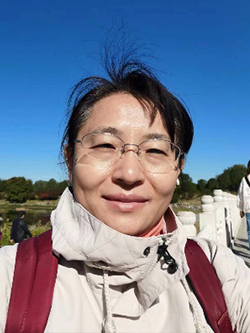THE THIRD INTERNATIONAL SYMPOSIUM
ON THERMAL-FLUID DYNAMICS 2022
(ISTFD 2022 )

THE THIRD INTERNATIONAL SYMPOSIUM
ON THERMAL-FLUID DYNAMICS 2022
(ISTFD 2022 )

Mindi Zhang
Beijing Institute of Technology, China
zhangmindi@bit.edu.cn
Mindi Zhangis an associate professor at school of Mechanical and Vehicle Engineering, Beijing Institute of Technology. Her research focuses on many aspects of marine engineering, including: cavitation, cavitation erosion, fluid-structure interaction, vehicle diving and jumping out, drag reduction of underwater vehicle and amphibious vehicle. She has published more than 50 articles in various international journals.
Title:Investigation of the cavitation bubble dynamics near different boundary conditions
Abstract: Thisreport is to apply both experimental and numerical methods to investigate the dynamics of the cavitation bubble near different boundary conditions, including free field, rigid boundary, elastic boundary, and an air bubble. In the experiments, the high-speed camera is used to record the time evolution of the cavitation bubble, and the schlieren optical system is applied to visualize the shock waves emitted by the cavitation bubble. In the numerical simulation, a 3D weakly compressible model with reformulated mass conservation equation is proposed to predict the cavitation bubble dynamics and its surrounding flow structure, including the velocity and pressure of the flow field.The evolution of the bubble shape, the propagation of the acoustic waves, the formation of the high-speed jet, and the reduction of the collapse strength are discussed.The main contentcontains: (1)The characteristics of the compression wave, rarefaction wave and shock wave generated by the cavitation bubble at different stages in the free field, and the influence of the acoustic waves on the flow field. (2) The high-speed jet and collapse behavior of the cavitation bubble near the rigid/elastic boundary, and the comparison of bubble collapse time, position, and velocity near the rigid and elastic boundary.(3)The morphology evolution and collapse feature of the cavitation bubble near the air bubble, the effect of the standoff distance on the bubble collapse patterns, and the attenuation effect of the air bubble on the velocity of the collapse jet and the strength of shock waves.